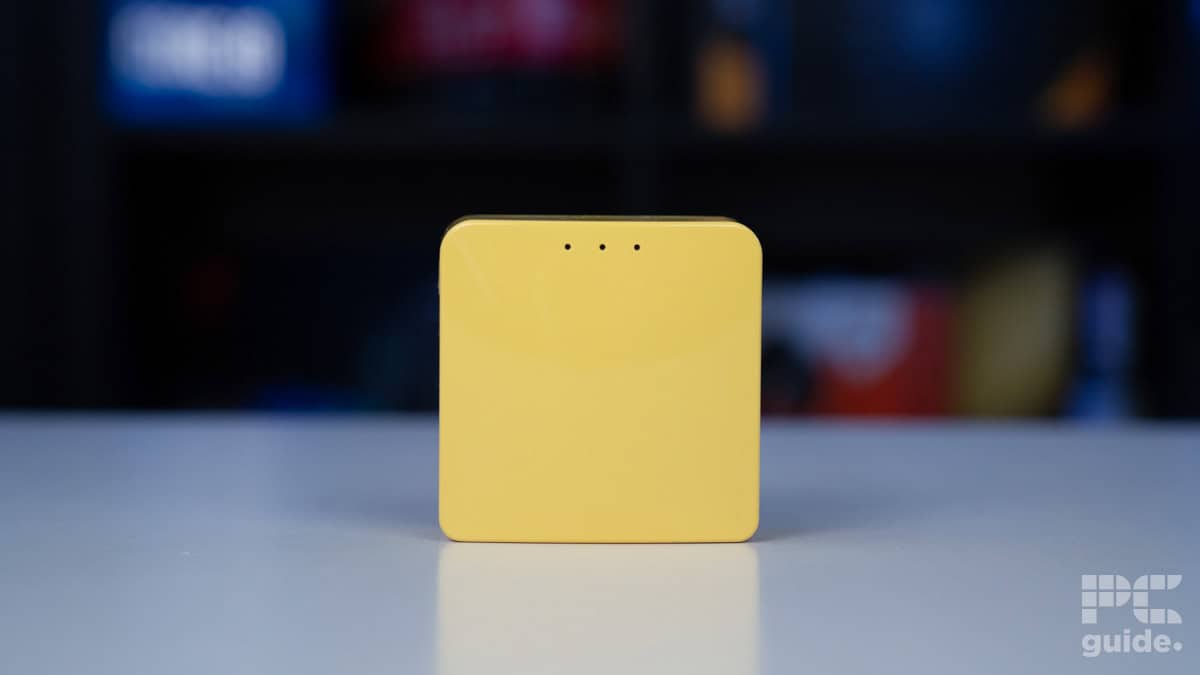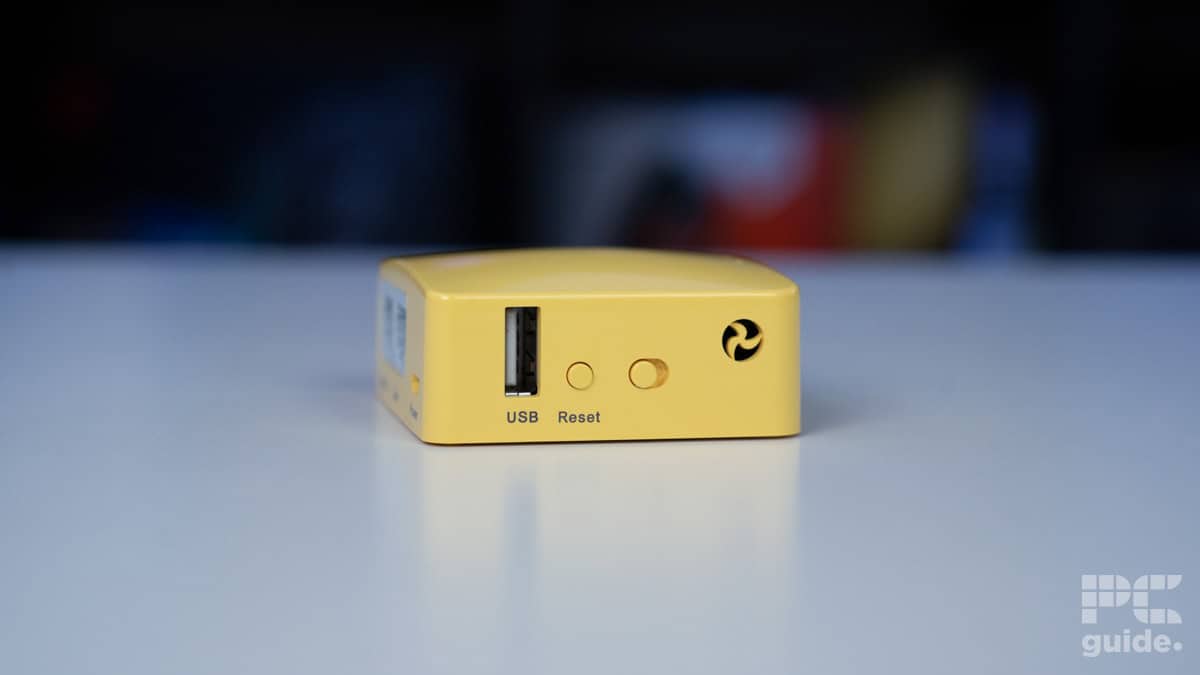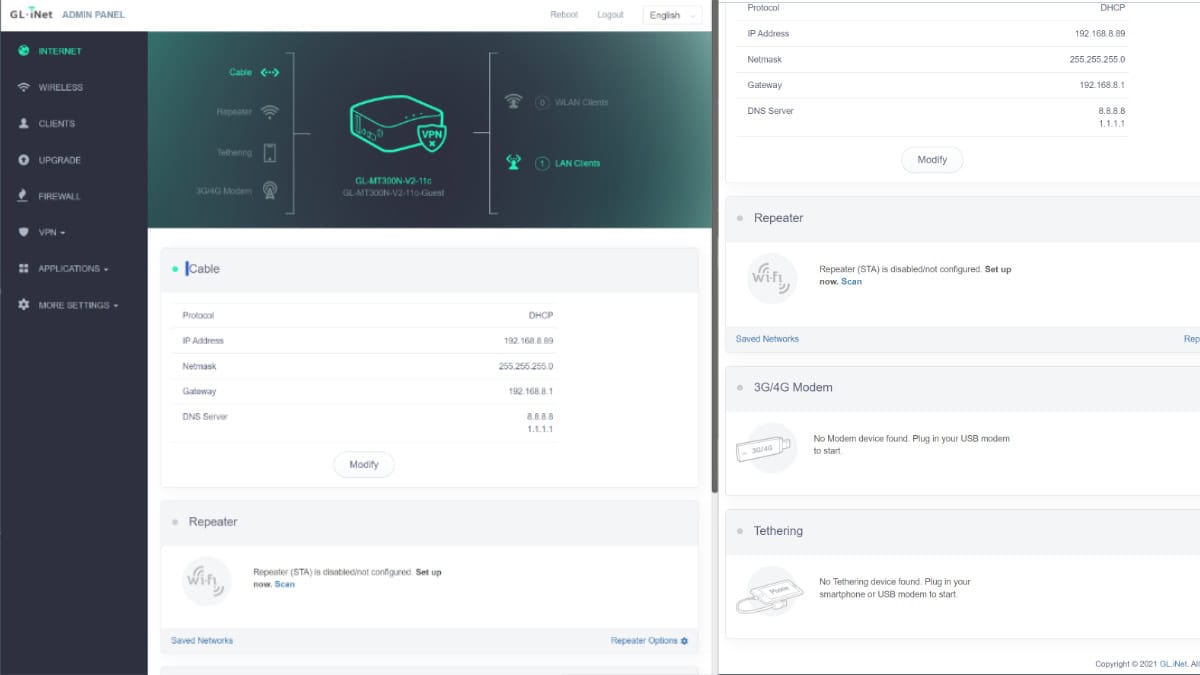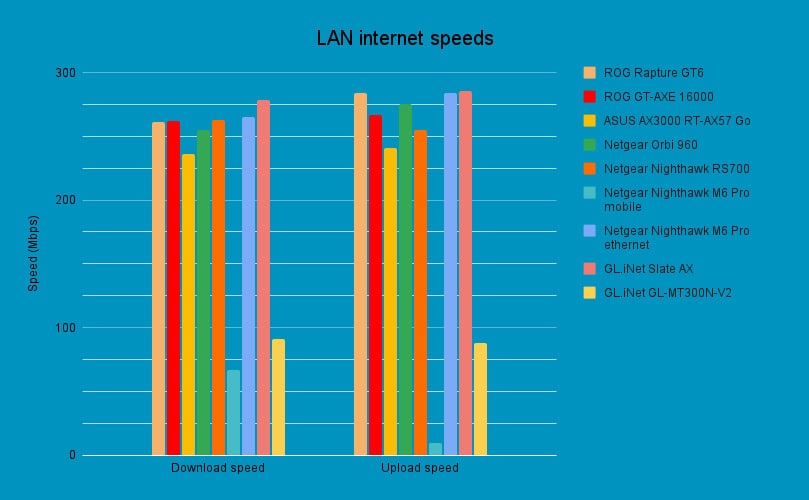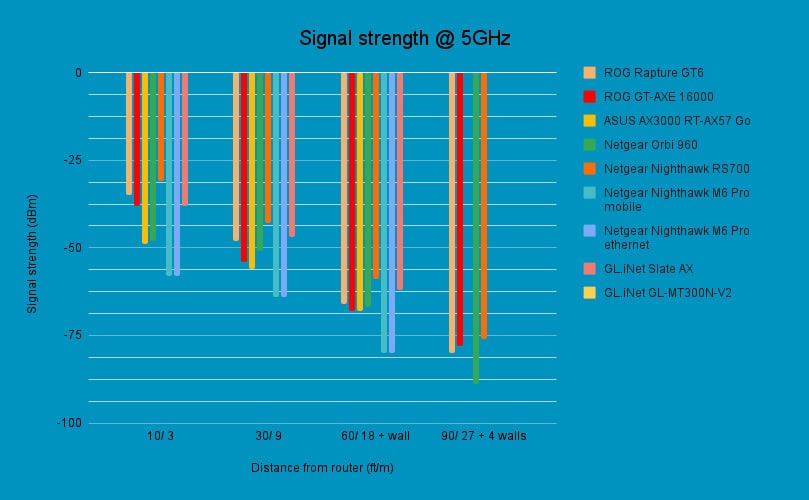GL.iNet GL-MT300N-V2 review: small, cheap, and colorful, but not the fastest
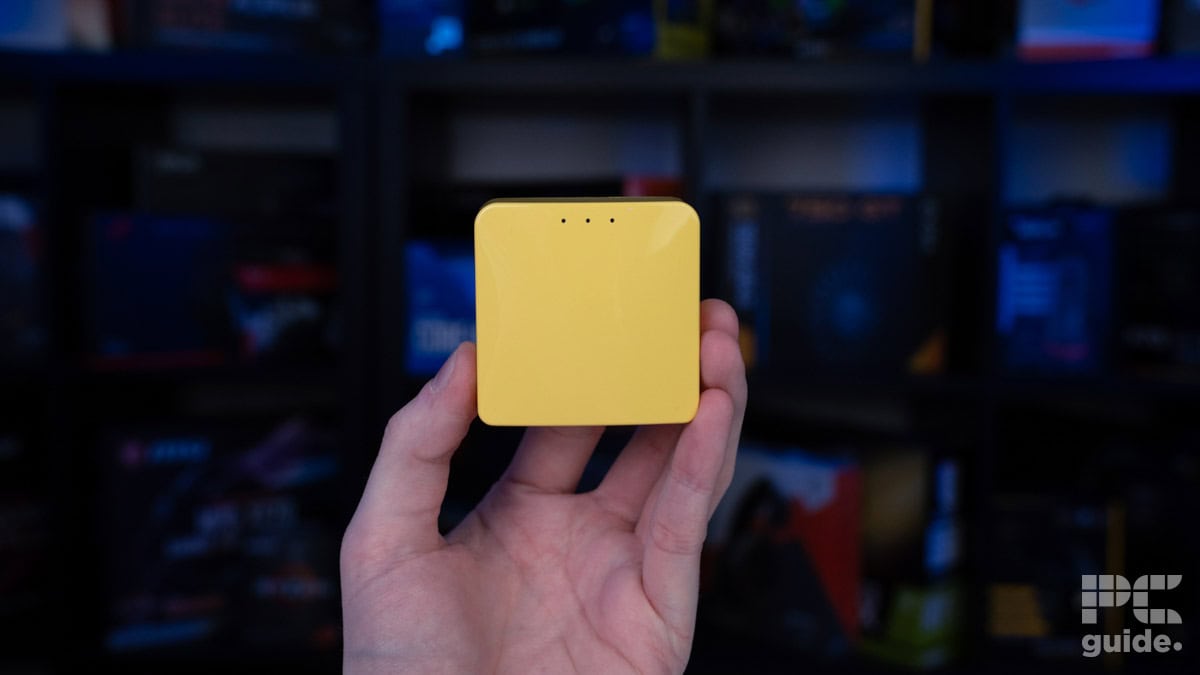
Table of Contents
GL.iNet is certainly a bit less prominent of a networking brand but it has surprised us a lot in our recent tests. This time it’s the turn of the GLiNet GL-MT300N-V2 review, in the colorful mango colorway. It is a compact little travel router for providing a network solution on the go and not taking up too much space. But with that, there are plenty of restrictions especially when compared to more standard wireless routers.
Limiting its performance and capabilities, it does stand out a bit compared to the other routers we pip it up against in our routine but should provide a good comparison of how much it changes with its specs and features. But that might be expected with the price you pay for it and the package you get. So let’s see what it brings to the table.
Prime Day is finally here! Find all the biggest tech and PC deals below.
- Sapphire 11348-03-20G Pulse AMD Radeon™ RX 9070 XT Was $779 Now $739
- AMD Ryzen 7 7800X3D 8-Core, 16-Thread Desktop Processor Was $449 Now $341
- ASUS RTX™ 5060 OC Edition Graphics Card Was $379 Now $339
- LG 77-Inch Class OLED evo AI 4K C5 Series Smart TV Was $3,696 Now $2,796
- Intel® Core™ i7-14700K New Gaming Desktop Was $320.99 Now $274
- Lexar 2TB NM1090 w/HeatSink SSD PCIe Gen5x4 NVMe M.2 Was $281.97 Now $214.98
- Apple Watch Series 10 GPS + Cellular 42mm case Smartwatch Was $499.99 Now $379.99
- ASUS ROG Strix G16 (2025) 16" FHD, RTX 5060 gaming laptop Was $1,499.99 Now $1,274.99
- Apple iPad mini (A17 Pro): Apple Intelligence Was $499.99 Now $379.99
*Prices and savings subject to change. Click through to get the current prices.

- Standard: Wi-Fi 4
- Frequency bands: 2.4GHz
- Max speed: 300Mbps
- LAN ports: 1x 100Mbps
- WAN: 1x 100Mbps
- CPU: MTK MT7628NN @580Mhz SoC
- Memory: DDR2 128MB / NOR Flash 16MB
- USB: 1x USB 2.0 port
- Dimensions: 58 x 58 x 25mm
- Weight: 40g
Overall, the GL.iNet GL-MT300N-V2 is certainly a useful little piece of hardware. It’s definitely a useful addition to those looking to secure their public network usage or extend out their network for light usage. It’s so cheap, but shows that with older hardware. But that keeps it nice and handy for powering with just 5V 2A it is greatly portable and adaptable. With so many connection options, it has great value as a travel router to fit in your pocket.
- A small and capable travel router
- Great at securing and extending networks
- Surprising amount of connectivity for the size
- Very cheap and affordable for anyone
- Little power consumption means flexible power options
- On an old WiFi standard limited to 2.4GHz
- Slow ethernet and USB performance but good features to have
- Limited storage means you can’t have many apps installed at a time
Design
The GL.iNet GL-MT300N-V2 Mango comes in a compact small form factor and in a fun bright color. Not only that but it keeps things light, coming in at 58 x 58 x 25mm and only weighing 40g, it’s designed for portability and that’s what it does. With no shame in the way it looks, it can quite easily fit into your pocket.
That portability and flexibility are also supported by the low power consumption of the router as well and what it takes to keep it running is very simple. As with a 5V/2A Micro USB input, it is a simple solution, something that can come from something as simple as a power bank or a small power brick that doesn’t need a massive adapter. That mentality can be seen with the box contents with it only bringing a USB-A to micro b and ethernet cable with a bit of paperwork.
With so many connection options, it has great value as a travel router to fir in your pocket.
For the general look, it’s mostly just a basic cube with nothing really standing out. No huge antennae standing guard, but a small little box with a bump and curvy edges that is more inconceivable mostly apart from the color (although there is a shadow version too).
The top is very inconspicuous with three status LEDs for power, configurable, and wireless. Down the front below the lights, there’s nothing but a smooth surface, whilst the sides and back are where you find all you need. The back features one LAN and WAN ethernet port rated up to 100MB/s each, alongside the power input. Then the right side is also blank but has a small vent hole, whilst the other side also has a hole with the reset button, USB, and switch. As for the bottom, that has the majority of vent holes featuring the top and bottom line of cutouts surrounding the info sticker.
The baseline of the router inside features the Mediatek MTK MT7628NN @580Mhz SoC platform, which isn’t exactly a speedy or powerful setup. But there is little space cooling capacity and power to fit into the box but enough for the specs that it brings. This is why it is a Wi-Fi 4 standard router with only 2.4Ghz available with a two transmitter, and two receiver antenna internally.
Other features
That SoC is supported with DDR2 128MB of memory, which isn’t all too much but is enough for the tasks that run on the device. But, the storage is certainly lacking on the model, with only 16MB of NOR Flash, which limits what you can have on the device. You have to pick and choose what apps you want, including the file-sharing app that you need, and it can’t coexist with the advanced Luci settings.
That we need for the storage test we do, which is possible thanks to the USB 2.0 port at the side, but don’t expect too much out of it. But there is some stick to trying to set it up, as there is a bit more technical work to be done to access it. Having to utilize Samba and setting up config from the web app and command lines is a bit hands-on but not impossible.
There is also a lot of flexibility for how you get internet to the router. It has four separate ways to connect up with the usual cable, but then allows it to be used as a repeater to available WiFis around, tethering to your phone or mobile device, and as a 3G/4G modem via the USB. That makes it very flexible including if you just want to extend the wireless to your garden or somewhere that doesn’t quite get the signal.
Then there are also all the VPN options and much like the Slate AX we reviewed as well, you can keep things secure and private. Which is handy for public spaces and connections, but does need managing with the limited flash space as well. With more than 30 VPNs accessible it does offer a range of options that can help with speed, along with a quick off/on switch you can program for it on the side.
Pricing
The pricing is where the Mango router shines and surprises, as it can be found on Amazon for just $29.90. Not surprising considering you’re several generations behind in WiFi standards, lacking ports, and without much power. But certainly, when the Slate AX costs over $100 more, and the Netgear Nighthawk M6 Pro we reviewed also is over $900, it’s a whole different scale to go for.
impressively compact, and colorful travel router
Performance
Now when it comes it comes to its performance, we put it to the test as we did the rest of the routers for our graphs below. We connected it via an ethernet cable and tested the LAN and wireless speeds with our testing bench and Samsung S21 FE phone. You can read about our how we test routers page to see in-depth how these are done. But below we focus on the GL-MT300N-V2 with our more limited 300Mbps speeds and wireless connectivity. These were tested with WiFiMan and Speed Test apps for wireless.
Signal strength
Starting off with the signal strength is how well the phone and router connect over wireless. We tested this over a set of distances and obstacles to see the range of capability of the router. The four markers are 10ft/3m and 30ft/9m with no obstructions, 60ft/18m with a wall in between, and then lastly at 90ft/27m which is behind four walls or two rooms as more of a hard task for the option.
For the Mango router starting off at 2.4GHz, the router achieved between -36dBm to -62dBm at 60ft and couldn’t connect at the furthest distance. Unconventionally, the lower the number or closer to zero, the better, and shows a stronger signal. Compared to the others we tested, it holds up quite well, but for short ranges and definitely not a big apartment solution.
Speed test and latency
Moving to actual speed tests we find the physical and internet connection speeds of the router. The first is the speed between the phone and router and then the actual speed the phone gets to the internet through it. There the physical download via wireless was certainly limited and ranged from 117Mbps down to 39Mbps at our third stop, with the upload seeing a strong retention between 117 to 107Mbps.
However, to actual download speed the phone was able to achieve ranged from just 18 to 0.3Mbps, so realistically only the 30ft 13.8Mbps is possible as it lacks the strength to fight walls. Whilst the upload speed ranged from 21.4 to 0.4Mbps, where once again the unobstructed second step of 21.4Mbps as well is the real limit.
Then we checked the LAN speed that a PC could achieve over ethernet. There the speeds achieved were 91.1Mbps download and 87.9Mbps upload which is stronger but still pales to the high 200s other options are capable of. Lastly, we checked the latency over wireless, which as seen in our image below, varied wildly. But in general, seemed to range between 42 to 50ms so it takes quite some time for the data to reach the router and back.
Storage speed test
Lastly, since there is a USB port available we did test the connection speed of it. Running an SSD plugged into a USB converter we ran CrystalDiskMark on it to benchmark it after taking time to set it up as it was a bit more convoluted. But there we see a single-digit score across the board for the router. With a near 8MB/s sequential read and 4.6MB/s sequential write it’s a rather slow option compared to others. But for the price, it is a rather low-spec pick and more of a useful feature than a definite standard to use.

Conclusion
Overall, the GL.iNet GL-MT300N-V2 in Mango is an impressively compact, and colorful travel router. Being able to provide a great range of options to connect and secure to the internet, makes traveling easier by connecting plenty of devices to it. Along with VPNs on board and still offering a few physical connections it is surprisingly flexible. Sure it doesn’t reach the fastest speeds, but for the price it asks, and the situations you’re going to use it in, means it doesn’t need to be. It doesn’t have the strongest signal either, but for connecting things up at the coffee shop or picnic, it’s a great choice.

- Standard: Wi-Fi 4
- Frequency bands: 2.4GHz
- Max speed: 300Mbps
- LAN ports: 1x 100Mbps
- WAN: 1x 100Mbps
- CPU: MTK MT7628NN @580Mhz SoC
- Memory: DDR2 128MB / NOR Flash 16MB
- USB: 1x USB 2.0 port
- Dimensions: 58 x 58 x 25mm
- Weight: 40g









